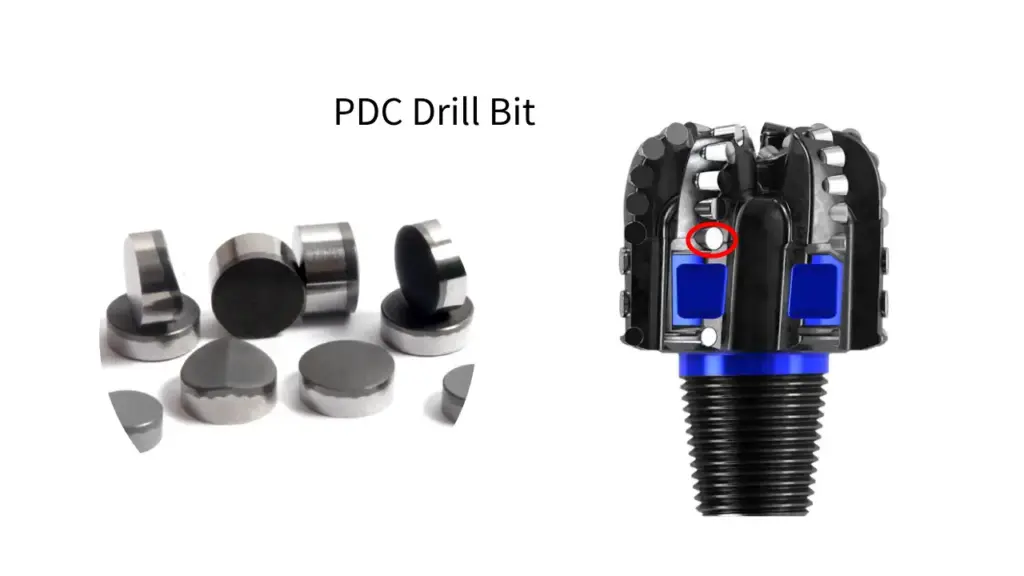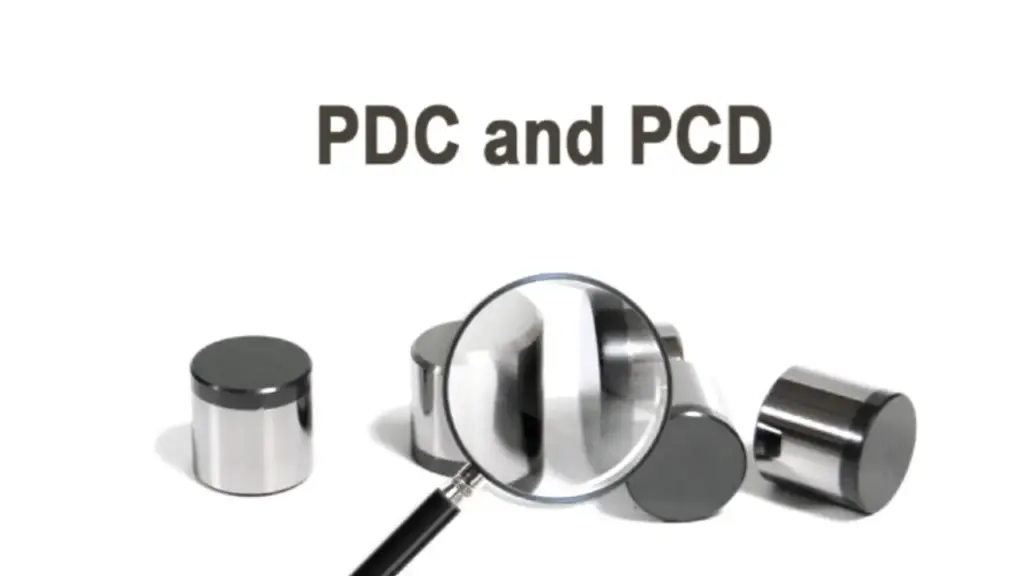In the industry of drilling and cutting tools, the terms PDC and PCD are frequently encountered, often leading to confusion. While seemingly similar, these acronyms represent distinct aspects of superhard materials used in demanding industrial applications. Understanding their differences is crucial for selecting the right tool for specific tasks.
This guide will clarify the fundamental distinctions between PDC and PCD, explaining what each term signifies, how they are manufactured, and their primary applications. By the end, you’ll have a clear understanding of why these terms are not interchangeable and how they contribute to high-performance tooling.
What is PDC?

PDC stands for Polycrystalline Diamond Compact. It refers to a type of cutting element used in drill bits, particularly prevalent in the oil and gas industry. A PDC cutter consists of a layer of synthetic polycrystalline diamond (PCD) bonded to a tungsten carbide substrate.
This design combines the extreme hardness and wear resistance of diamond with the toughness and structural integrity of tungsten carbide, allowing PDC drill bits to efficiently shear and scrape rock formations, leading to higher penetration rates and longer tool life compared to traditional drilling methods.
What is PCD?

PCD, or Polycrystalline Diamond, refers to a synthetic superhard material manufactured by sintering together numerous fine diamond particles under extremely high pressures and temperatures, typically in the presence of a metallic binder (like cobalt).
This process creates a solid, intergrown mass of randomly oriented diamond crystals, which provides PCD with exceptional hardness, wear resistance, and thermal conductivity. It is the raw material from which cutting elements for various industrial tools, including PDC drill bits, are fabricated.
PDC and PCD

Understanding the difference between PDC and PCD is crucial in the world of industrial cutting and drilling tools. While closely related, they represent distinct components that work together, particularly in the context of advanced drill bit technology.
PCD
PCD, or Polycrystalline Diamond, refers to the material itself. It is a synthetic superhard material created by sintering together numerous micro-sized single diamond crystals under extremely high pressures and high temperatures. This process, often involving a metallic binder, forms a solid, intergrown mass of randomly oriented diamond particles.
The resulting PCD material boasts exceptional hardness, wear resistance, and thermal conductivity, making it ideal for applications requiring extreme abrasion resistance. It is the raw, high-performance diamond material that forms the core of many advanced cutting solutions.
PDC
PDC, or Polycrystalline Diamond Compact, refers to a composite cutting element that incorporates PCD. A PDC cutter consists of a layer of the aforementioned PCD material bonded to a much tougher and less brittle tungsten carbide substrate. This bonding typically occurs under high pressure and temperature, creating a robust and integrated cutting tool.
The design of a PDC cutter leverages the extreme hardness and wear resistance of the PCD layer for the actual cutting action, while the tungsten carbide backing provides the necessary structural integrity, impact toughness, and attachment point for the drill bit body. This combination makes PDC cutters highly effective in demanding industrial applications, especially in drill bits for oil and gas, geothermal, and mining.
Here is the table showing you the differences between PCD and PDC:
| Feature | PCD (Polycrystalline Diamond) | PDC (Polycrystalline Diamond Compact) |
| Nature | A synthetic superhard material | A composite cutting element |
| Composition | Sintered diamond particles (with binder) | Layer of PCD bonded to a tungsten carbide backing |
| Primary Role | Provides extreme hardness and wear resistance | Performs the actual cutting, provides structural integrity |
| Application | Used as the wear-resistant part within a PDC cutter, also in other cutting tools | Integrated into drill bits, reamers, and other cutting tools |
How to Choose PDC and PCD Drill Bits?
Choosing the appropriate PDC (Polycrystalline Diamond Compact) or PCD (Polycrystalline Diamond) drill bit is a critical decision that directly impacts drilling efficiency, cost, and project success. This selection process isn’t about choosing between PDC and PCD as they are related; rather, it’s about selecting the right PDC bit design (which utilizes PCD cutters) tailored to the specific geological conditions and drilling objectives.
The optimal bit choice depends on several factors, primarily the characteristics of the rock formation and the desired drilling performance. A careful assessment of these elements will guide you toward the most effective PDC drill bit for your operation.
- Formation Hardness and Abrasiveness: For softer to medium-hard formations like shale, sandstone, and limestone, PDC bits with aggressive cutter geometries and higher blade counts are often preferred. In contrast, harder, more abrasive formations or those with interbedded layers may require PDC bits with more robust cutter protection and a tougher matrix body to prevent premature wear and impact damage.
- Drilling Objectives (ROP vs. Bit Life): If maximizing the Rate of Penetration (ROP) is the priority, a PDC bit with larger, more exposed cutters and a more aggressive profile might be chosen to achieve faster drilling speeds. Conversely, if extending bit life and minimizing trips out of the hole are paramount, a more durable bit with smaller, more numerous cutters and enhanced gauge protection would be selected to ensure longevity.
- Wellbore Stability and Directional Control: For applications requiring precise directional control or maintaining a stable wellbore, PDC bits with specific blade configurations and gauge pads are designed to optimize steerability and reduce vibration. The bit’s profile and cutter layout influence its tendency to build, drop, or hold angle, which is crucial for complex well trajectories.
- Hydraulic Optimization and Cuttings Evacuation: Proper hydraulic design, including nozzle size and placement, is essential for effective cooling of the PDC cutters and efficient removal of rock cuttings from the bit face. Selecting a bit with adequate junk slot areas and optimized flow paths prevents bit balling in sticky formations and ensures continuous, high-performance drilling.
Conclusion
Understanding the distinction between PDC (Polycrystalline Diamond Compact) and PCD (Polycrystalline Diamond) is crucial for selecting the right drilling tools. While PCD is the superhard material itself, PDC refers to the composite cutting element that utilizes PCD for superior cutting performance in drill bits. This knowledge ensures optimal bit selection for various geological conditions.
For high-quality and reliable drill bits that leverage the benefits of PDC technology, consider Sinodrills. Our extensive range of wholesale drill bits is designed to meet the demands of modern drilling, offering efficiency and durability.
Choose Sinodrills for your wholesale drill bit needs and experience enhanced drilling performance and cost-effectiveness in your operations.


